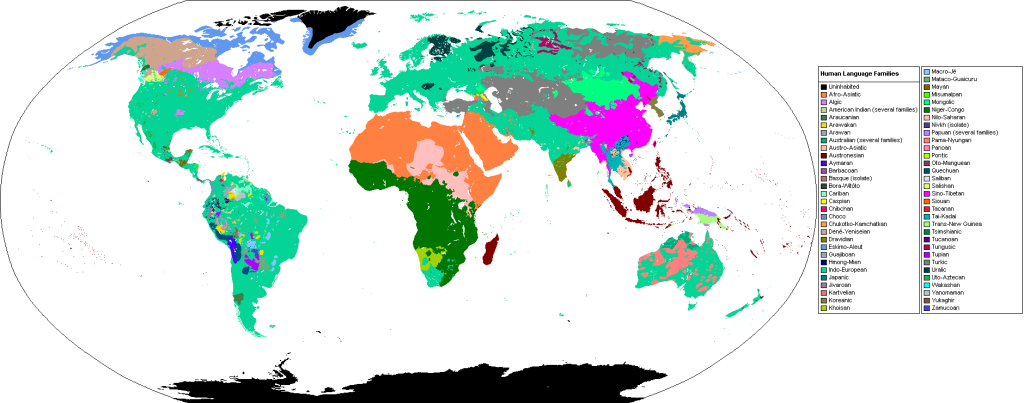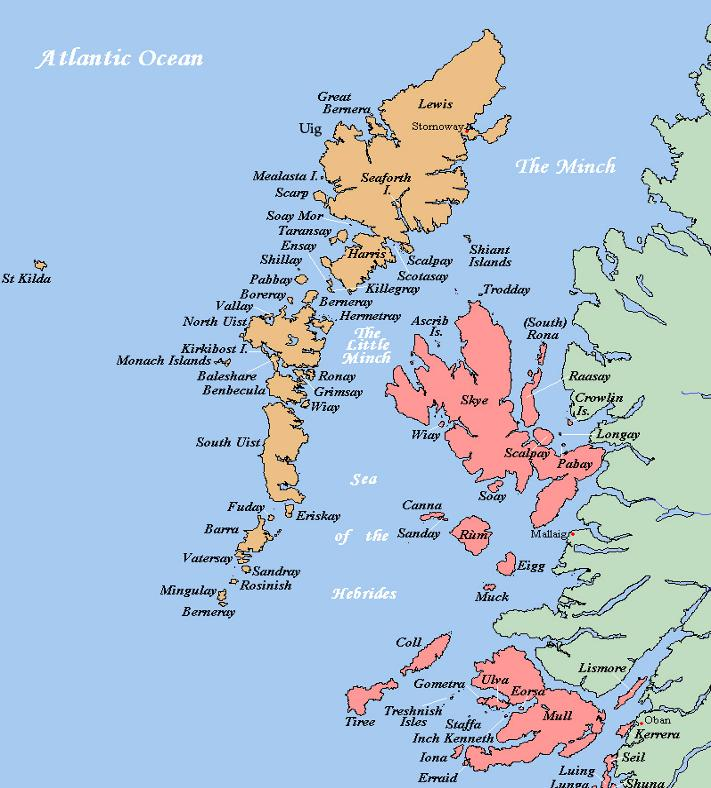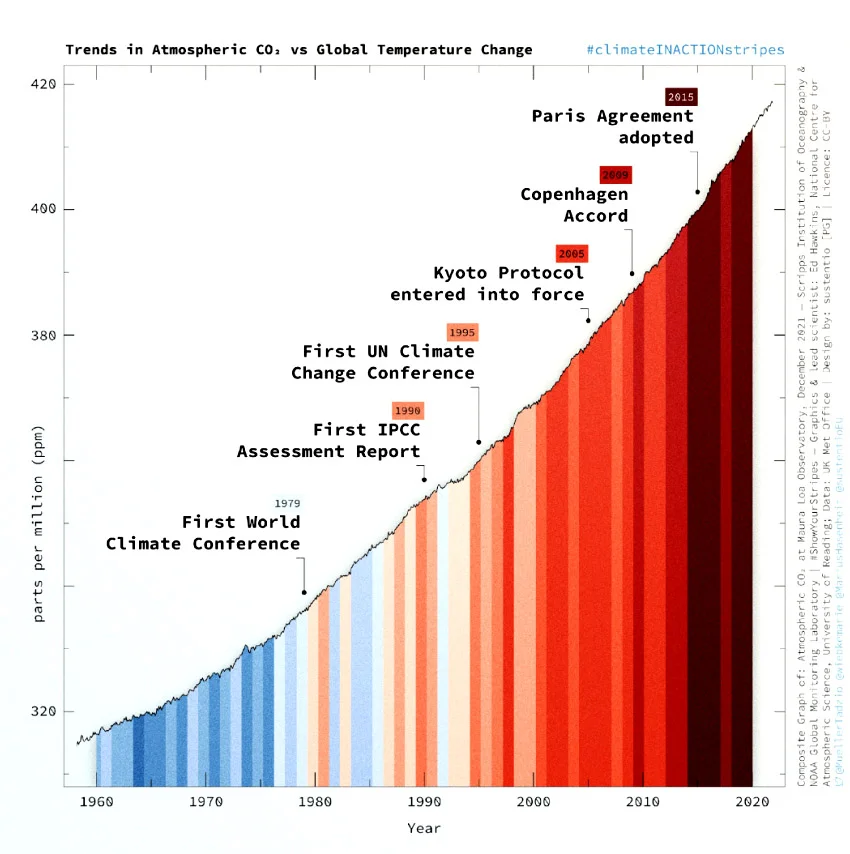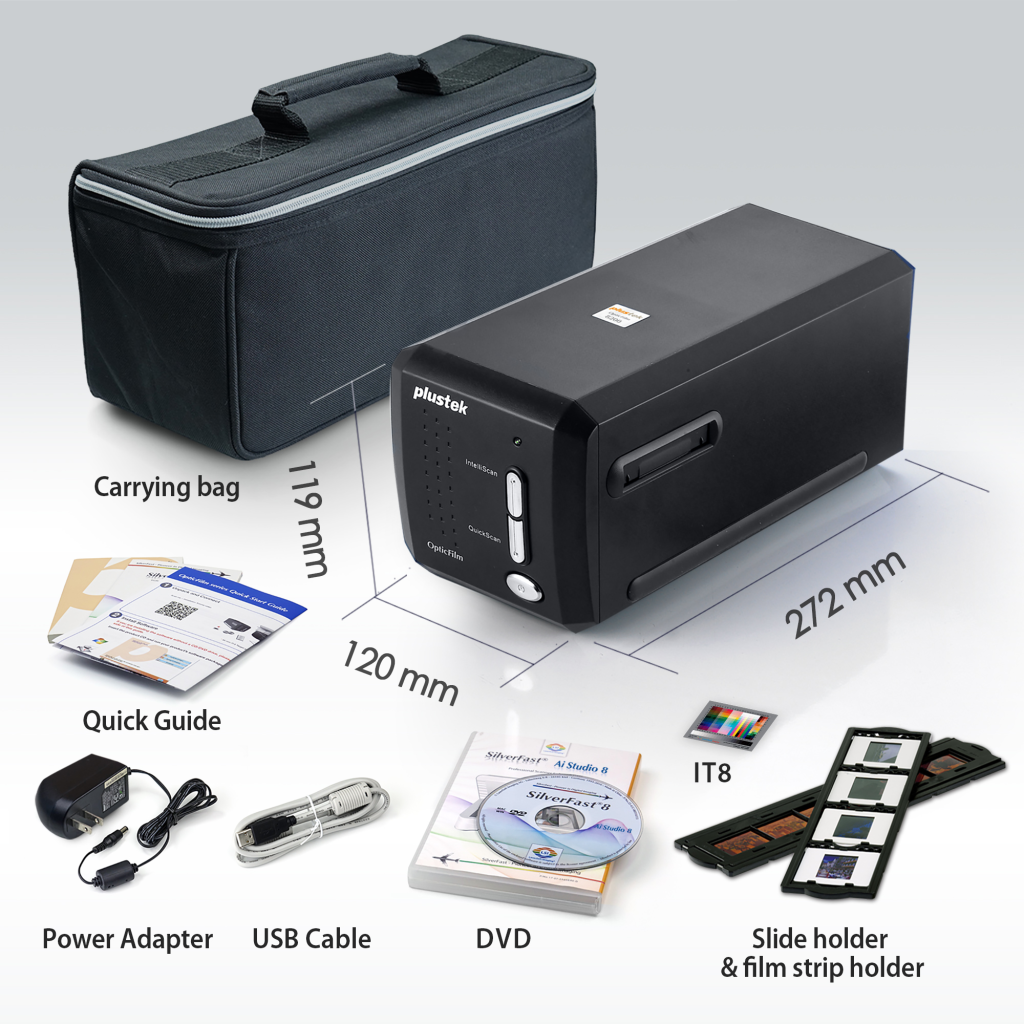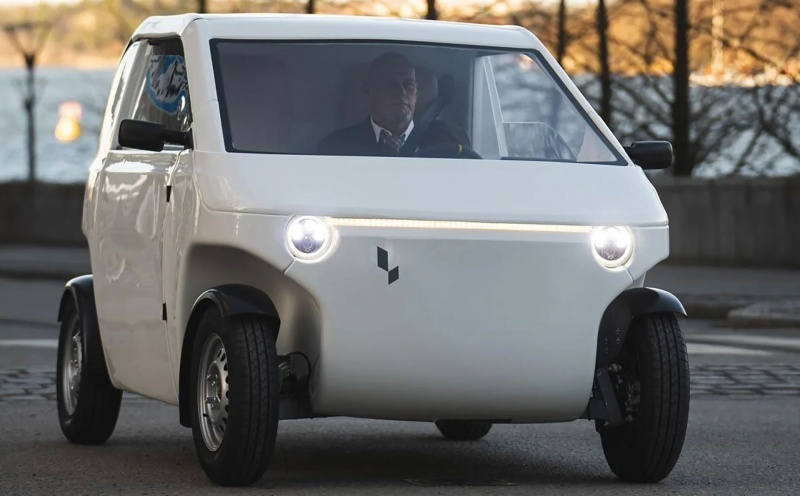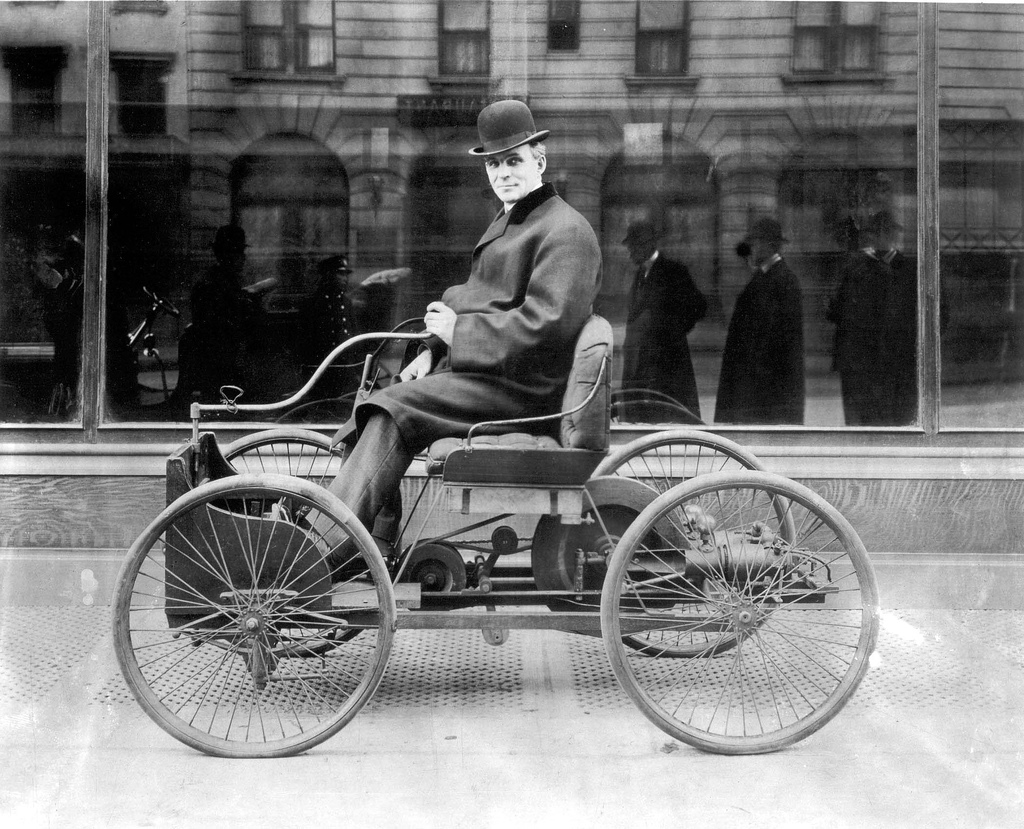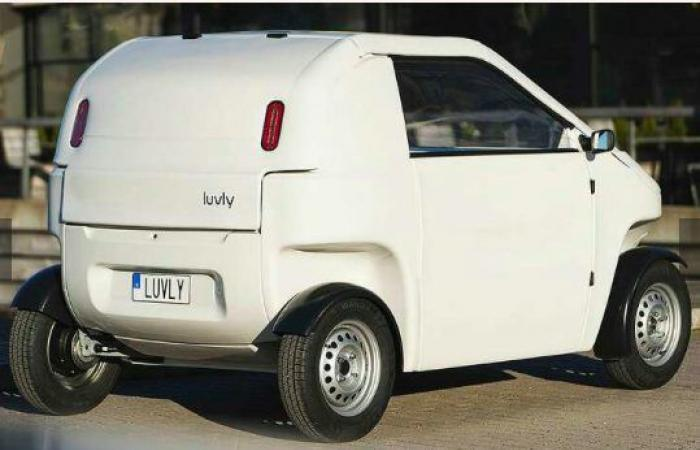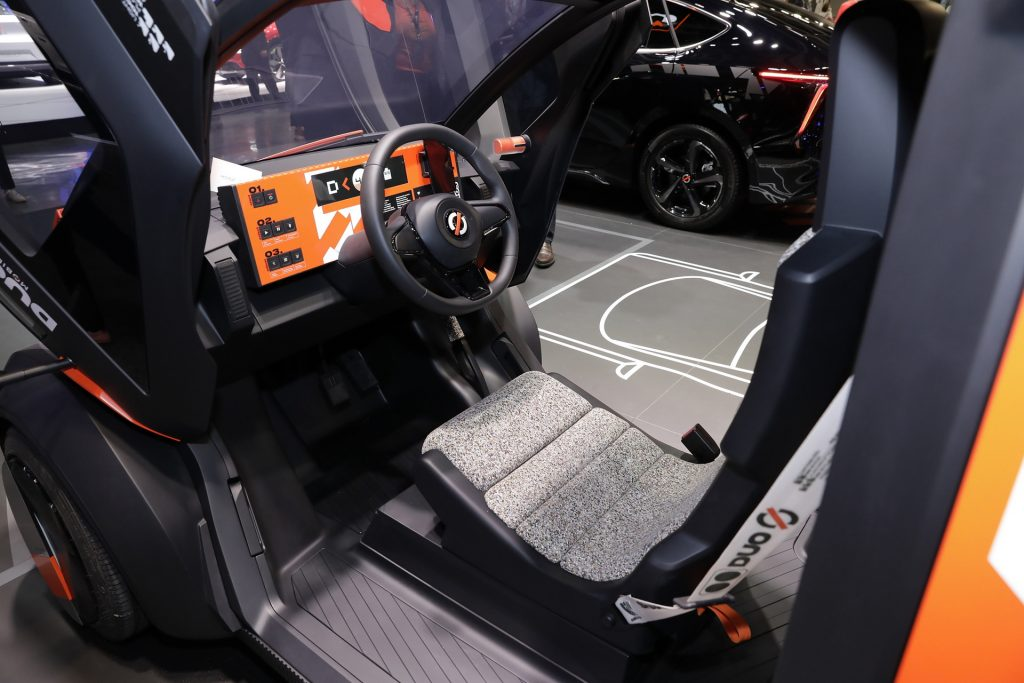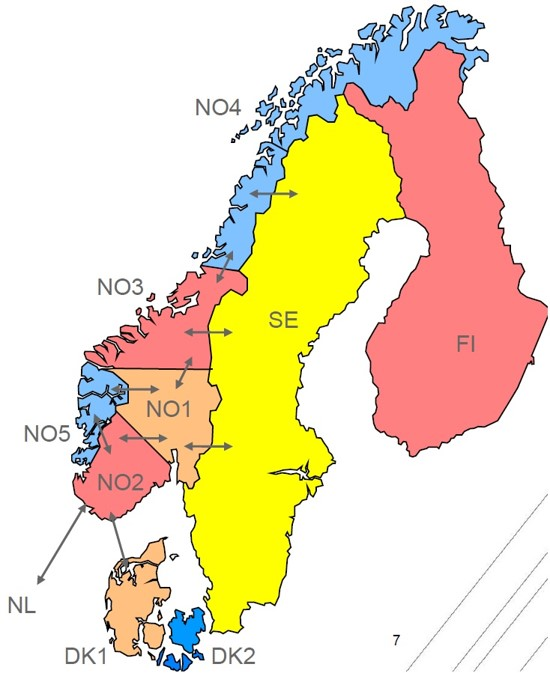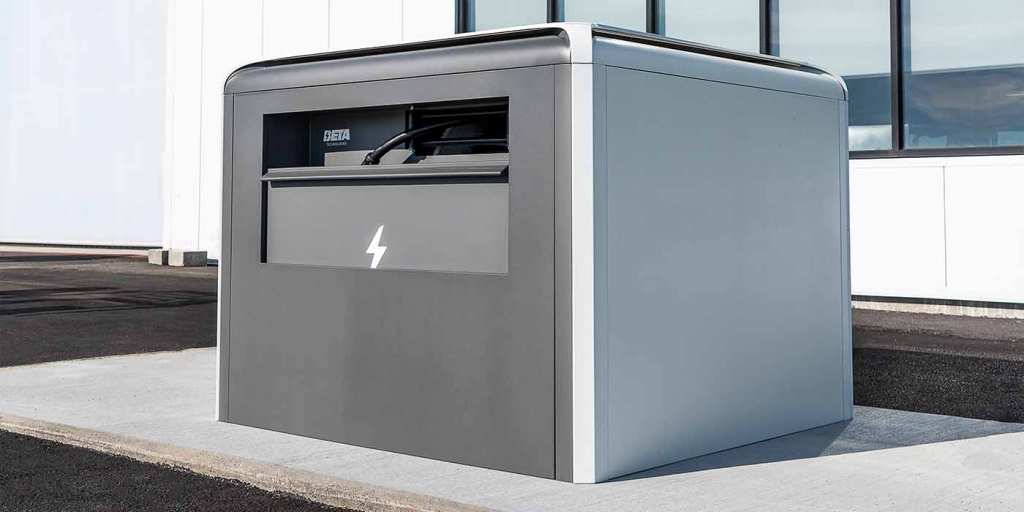I don’t find having a hearing disability fun! Anonymous
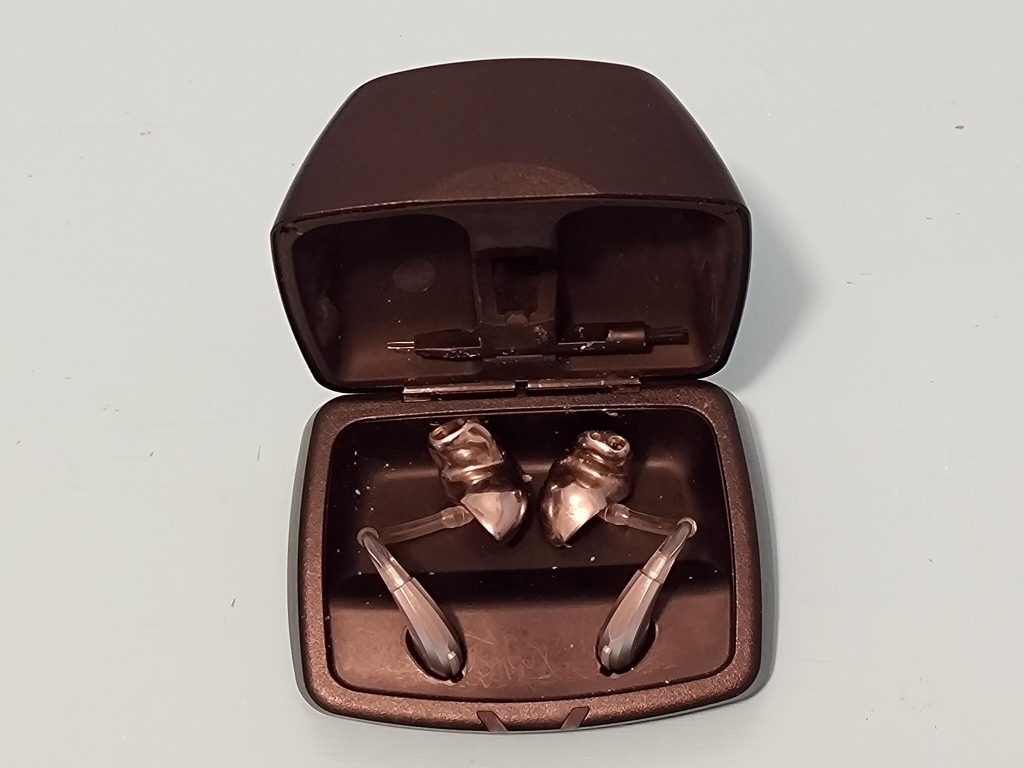
V2
This weblog post is about technical devices that will ease the difficulties a hearing disability places on a person. These devices can only ease a burden, they cannot eliminate it, Hearing loss will always result in deprivations.
This is the second version of this post, with thanks to Art Vaughan, for finding 14 situations that needed to be enhanced in various ways. There are undoubtedly more. Thank you, Art!
Modern hearing aids are computerized electroacoustic systems that transform sound as it exists in a user’s environmental into sound that can be perceived, using audiometric and cognitive rules. Modern devices also utilize digital signal processing to improve speech intelligible, yet comfortable for the user. Such signal processing includes feedback management, wide dynamic range compression, directionality, frequency lowering, and noise reduction.
Hearing aids are still equipped with the basics from a century before: a microphone, amplifier and a receiver. Hearing aid manufacturers, confusingly, use receiver to refer to the micro speaker – a sender – inside each hearing aid. The microphone senses the environment, listening to sound vibrations in the normal range of human hearing. The amplifier processes signals from the microphone, and the receiver sends the signal to the ear.
Since the audio circuit and the additional control circuits are fully digital on modern hearing aids, they can be connected to a computer. Characteristics can then be adjusted individually, provided the hearing professional knows what they are doing. It is often easier to implement circuits digitally than to construct equivalent analog circuits. A typical example is that specific frequencies can be amplified more than others to provide better sound quality. Users can select between multiple programs that operate automatically and adaptively. Among the advantages are: reduced acoustic feedback and background noise and the use of multiple microphones to improve spatial awareness. Frequency transposition allows frequencies that a user may not hear to be reconstructed in frequency regions where hearing is better. Control signals on a hearing aid on one ear can be sent wirelessly to the control circuitry in the hearing aid on the opposite ear to ensure that the audio in both ears is either matched directly or that the audio contains intentional differences that mimic the differences in normal binaural hearing to preserve spatial hearing ability.
At one time streamers were popular. These were small devices worn like a pendant, that allowed audio signals to be sent wirelessly to and from other external devices, such as music players. This capability is now built into apps found on smartphones. With the addition of speech recognition and internet capability in the mobile phone, the wearer has better control over communications, and in many more situations than with hearing aids alone. Voice activation – think Siri – has becoming more common and is now used everywhere.
Digital hearing aids have existed since 1984. The first practical, wearable, fully digital hearing aid was invented by Maynard Engebretson, Robert E Morley Jr. and Gerald R Popelka. Their work resulted in US Patent 4,548,082: Hearing aids, signal supplying apparatus, systems for compensating hearing deficiencies, and methods. The patent was issued 1985-10-22, and expired 2005-10-22. This patent formed the basis of all subsequent fully digital hearing aids.
A telecoil is a tiny copper wire coiled around a metal rod. It is used to capture electromagnetic waves, much like an antenna. Circuits inside a hearing aid will convert these waves into an audio signal. Telecoil listening systems bypass hearing aid microphones, to eliminate most background noise and to transmit a clear audio stream.
At one time acoustic feedback was a major issue for hearing aids wearers when using the telephone. With a telecoil, hearing aid users can tap directly into the electromagnetic signal instead of the acoustic one, preventing feedback.
The last significant change has been the use of rechargeable batteries. These are charged by placing the hearing aids in their case, and then attaching the case to a power source, using a connector. In Europe, the use of USB-C connectors on new devices, including hearing aid cases, will be required by the end of 2024.
People with moderate-to-profound sensorineural hearing loss are often provied with a cochlear implant (CI) neuroprosthesis. This is surgically implanted. It bypasses acoustic hearing by direct electrical stimulation of the auditory nerve. Therapy teaches CI users how to interpret signals as speech so they understanding speech better in both quiet and noisy environments. CIs can be equipped with telecoils.
In Australia, Europe, North America and many other places in the world, hearing loops have been mandated for use in spaces used by the public. Previously, some jurisdictions initially allowed other, cheaper technologies. Unfortunately, this meant that hearing loops were an afterthought to disability infrastructure.
In contrast to other approaches, some of the advantages of hearing loops combined with telecoil equipped hearing aids are: there is no maximum number of users that can be served at a venue, they are simple to use, improve the signal-to-noise ratio (SNR) and signal quality, reduce background noise and reverberation, allow users to retain their dignity and privacy by not requiring them to remove hearing aids to use of forms of hearing augmentation. Despite this, there can be legitimate complaints that hearing loops are not designed for listening to music, because of distortion at higher frequencies.
Joseph Lazarevich Poliakoff (1873 – 1959), a Ukrainian-born British telephone and sound engineer and inventor, particularly of hearing aids. He founded the Multitone Electric Company in 1931. They produced their first hearing aid, a desk-top model, in 1933. In 1937, Poliakoff was issued a patent for an induction-loop hearing assistance system. It remained valid until 1958, when it entered the public domain.
When a telecoil is activated, it senses magnetic fields, replacing (sometimes supplementing) the microphone, sensing for sounds. Telecoils can be used with hearing loops, individual amplifiers and smartphones.
In Norway, and undoubtedly many other places, no landlines exist, since all phones are connected to the mobile network. Telephone providers can supply a device with limited functionality that looks like a landline. It is permanently plugged into an electric circuit. It also costs about twice as much as a smart phone. There are also dumbphones that are specifically designed for elderly users. Acoustic coupling settings allow a phone to be used normally, with paired hearing aid microphones automatically picking up sound coming from the phone. Cellphones with a M rating of 3 or 4 have this capability. Bluetooth is also used for communication between hearing aids and a phone. This requires the two devices to be paired.
Some phones have telecoils built in. These can be set to send magnet signals to hearing aids without using microphones. These can improve the signal-to-noise ratio while eliminating feedback distortions. Phones with a telecoil capability have a T rating of 3 or 4 have this capability.
A hearing loop = audio induction loop = audio-frequency induction loop (AFIL) is assistive listening technology that uses hearing aid telecoils.
We have a hearing loop at Cliff Cottage, an electrical cable with a pair of 0.75 mm2 = 19 AWG wires. This type of cable is typically used for extension cords for lamps. The hearing loop was placed around the perimeter of our living room in the ceiling . It is almost 30 m = 100 feet long. The loop starts and ends in a wall connector, close to where a hearing loop amplifier is located. A hearing aid will be able to pick up audio inside a hearing loop, as well as up to several meters outside of it.
The loop was first installed in 2009, by the local branch of NAV = Hub (literally), the Norwegian super-agency that, in addition to far too many other duties, provides assistive devices to residents. Before fitting new ceiling tiles in 2021, I took it down and reinstalled the loop after the tiles were in place. Later, I discovered that when such a system is installed in a new house, it is hidden in the floor. Unfortunately, I was unaware of this at the time, because I could have placed it in the floor when I replaced the living room flooring in 2022.
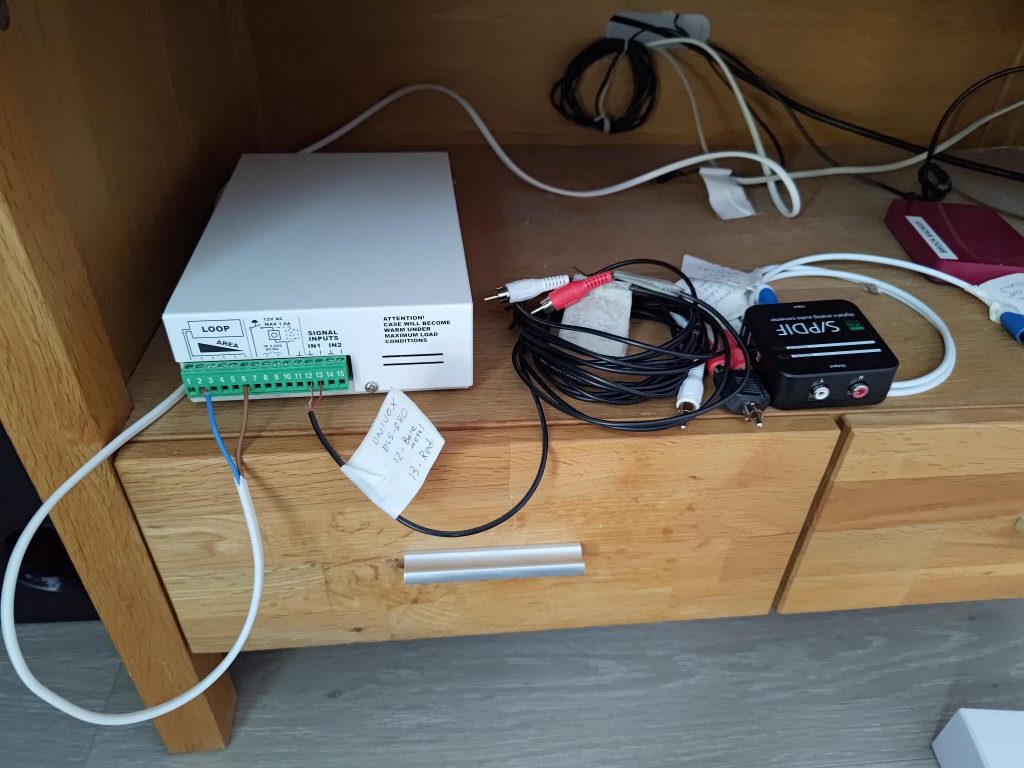
Working forward from a television’s S/PDIF Toslink digital optical connectors, a stereo digital audio stream was sent to a S/SPDIF splitter, that sent two RCA analogue signal streams onward. One stream was sent to the original Univox DLS-380 hearing loop amplifier. That amplifier sent the audio to the loop system. In addition, another stream was sent using RCA connectors to an active bass speaker, that plays low frequency sounds. Mid-frequency and high-frequency sounds were then sent in stereo to two (L & R) bookshelf speakers.
The current system has the same function, but with details that differ. The CLS-5 telecoil amplifier can operate with a wide range of operating voltages. In residential/ institutional/ commercial applications, it will most likely use 110-240 VAC. However, it can also be fitted into buses and recreational vehicles as well as boats, where it most likely will use 12-24 VDC. It comes with optical (digital) and coaxial (digital and analogue) inputs. It also has a setscrew that allows for adjustment of time delay between the audio and video signals (TV Sync). It provides easy connections to modern (and not so modern) flat screen plasma/ LED/ LCD TVs.
When these components were replaced at the end of 2023, none of the replacement units came with RCA connectors. HDMI, S/PDIF and USB-C audio connectors were common to both the (new) smart television and the sound bar. While the new Univox CLS-5 amplifier works with several types of connectors, the installer said that S/PID Toslink optical connectors created the least challenges. So these were used.
Once again a single digital audio stream was sent from the television to a splitter. From the splitter, two identical audio streams emerged. One was sent to the hearing loop amplifier, while the second audio stream was sent to the sound bar. Both used digital Toslink optical connectors. .The splitter is powered with mains electricity.
This cable generates an electromagnetic field throughout the looped space which can be picked up by: 1) telecoil-equipped hearing aids, 2) cochlear implant (CI) processors, and 3) specialized hand-held hearing loop receivers for individuals without telecoil-compatible hearing aids. So while this technology was installed specifically for one person using one technology, it is equally useful for other people, most likely visitors, using the other hearing assistance technologies.
In order to transmit the clearest possible sound source to a hearing-impaired listener, free of distracting noise, a hearing loop carries baseband audio-frequency signals without a carrier signal.
Installing the cables is not difficult, and can be installed by almost anyone. However, one should read amplifier documentation, and understand the process, before doing so. I am unsure of the reason for this, but the user’s manual states that one should twist the wires 180 degrees at some point. In this way a wire that was on the right at the beginning, will be on the left once the wire is turned, and vice-versa.
The Hearing Loss Association of America (HLAA) has commented on hearing loops:
Loop technology was pioneered in Europe where it is widely embraced and highly successful. When hearing accessibility in the United States was made a requirement of law in 1990 under the Americans with Disabilities Act, no distinction was made between loop systems and less expensive FM or IR systems. Although the ADA did require that systems provide access to “effective communication,” people with severe to profound hearing loss—for whom FM and IR systems often fall short—were slow to mobilize advocacy for hearing loops.
The ADA Standard for Accessible Design was updated in 2010 requiring that for renovation and new construction that at least 25% of receivers provided are hearing aid compatible—meaning that users do not have to remove their hearing aids to use the system. This dramatically raised the interest in and availability of hearing loops because loops are the only assistive listening systems that connect directly to telecoil-enabled hearing devices. (End of HLAA comment)
Tinnitus
Tinnitus is the perception of sounds that are not the result of an external source. There is no cure for this, but there are ways to manage the condition.
Despite being a person who was diagnosed with tinnitus at the age of about 50 in 1998, I have never considered using hearing aids as a treatment. I have had one counseling session. However, as a teacher I have regularly attended seminars with a focus on assorted disabilities, including hearing.
My approach to self medication has been to engage in activities that require concentration. This puts tinnitus into the background. At other times I rely on low intensity music. Over the past 25 years I have tried various genres. As I approached 60, I reduced – almost eliminated – listening to classical music and started listening to less melodic music. These are better able to mask my tinnitus. When tinnitus is at its worst, my music choices are the trashiest metal. My understanding is that everyone is different.
Many hearing aids offer some form of tinnitus relief. Often this is an app delivered to the hearing aids, from a phone. If this is the case, it is important that the phone and hearing aids are compatible with each other. Sometimes, it is a computer program inside the hearing aid, that has to be activated. It is also important to know if this program can be altered to reproduce the specific sounds needed by the user. Sounds that are enhanced for a particular users are more effective for therapy than more generic sounds.
Cognitive behavioural therapy (CBT) focuses on thoughts, beliefs and attitudes to improve emotional responses to help a person develop a strategy to help a person cope with a current problem. It was originally developed to treat depression, but its use has been expanded to include the treat other conditions, such as tinnitus.
MindEar is an app that provides CBT through a chatbot. The goal is to empower people so they regain more control over their lives. Often the use of such an app is combined with counseling with a clinical psychologist, either in person or online.
People with tinnitus often enter negative thought cycles. Many people need some form of counselling to help them cope with it.
Hearing aid styles
There are several hearing aid styles. Small hearing aids may be less visible but they may lack the power to improve hearing. These are referred to as Completely in the canal (CIC) or mini CIC. This is molded to fit inside an ear canal, but is only useful for mild to moderate hearing loss. One of its advantages is that it is less likely to pick up wind noise. Yet, because of its small size it uses very small batteries, which have a shorter life and can be difficult to install and remove. They often lack features, such as volume control or directional microphones. Earwax can clog the speaker.
An in-the-canal (ITC) hearing aid fits partly in the ear canal. Again, it is for mild to moderate hearing loss and is less visible than larger styles. It has many of the same problems as CIC hearing aids.
An in-the-ear (ITE) hearing aid is custom made either with a bowl-shaped area occupying the outer ear (full shell) or one that fills the lower part (half shell). Both are for people with mild to severe hearing loss. They are available with two directional microphones, volume control, longer battery life including rechargeable batteries. Again, earwax may clog the speaker, wind noise may be present, It is more visible but may be easier to handle.
Behind-the-ear (BTE) hearing aids rest behind the ear. A tube connects the hearing aid to a custom earpiece = ear mold that fits into the ear canal. This is the generic style appropriate for everyone, with any hearing condition. Since this is the largest type of hearing aid, it can fit in more electronics and batteries, has directional microphones, increases amplification, picks up more wind noise, and typically uses rechargeable batteries.
Receiver-in-canal (RIC) and receiver-in-the-ear (RITE) are similar to BTE hearing aids, but with the speaker = receiver in the ear canal, connected to the hearing aid with wire.
People with better low-frequency hearing and mild to moderate high-frequency hearing loss may want to use an open-fit hearing aid with an open dome in the ear.
People with hearing disabilities should think through the capabilities they want before deciding on a style. While younger people, especially, may want their hearing aids to be invisible, smallness introduces limitations. Growing one’s hair longer may be a better approach to concealing hearing aids.
Features to consider
Some features may improve one’s ability to hear in specific situations. All hearing aids have some amount of noise reduction available. The amount of noise reduction varies. Some also offer wind noise reduction.
Directional microphones are aligned on the hearing aid to provide for improved pickup of sounds coming from the front, and with reduced sounds from behind or from the side. These are particularly useful in a noisy environment.
Rechargeable batteries can make life easier by allowing batteries to be charged, rather than replaced.
Telecoils make it easier to hear when talking on a telecoil-compatible telephone or listening in an environment served with an induction hearing loop.
Another approach is wireless Bluetooth connectivity, achieved by pairing hearing aids with cellphones, music players, computers and televisions. Sometimes an intermediary device = a streamer is used to pick up the signal and send it to the hearing aids.
Some hearing aids are equipped with a remote control, that adjust features without hearing aid contact. Increasingly, a cellphone app is used for this.
Direct audio input allows audio from a television, computer or a music device to be attached, with a cord.
Some hearing aids can store several preprogrammed settings for various listening needs and environments. Trish has four settings on her hearing aids: normal, restaurant, hearing loop and silence.
Since most people use two hearing aids, these can be synchronized = function together so that adjustments made to one hearing aid will also apply to the other aid, simplifying control.
It takes time to adjust to a hearing aid. There is evidence showing that listening skills improve gradually as one become accustomed to using amplification. One’s own voice sounds different when wearing a hearing aid.
Studies
Currently, I am spending considerable time daily to understand hearing and hearing loss. My aim is to provide people in my immediate family (possibly extending outwards to friends) with better advice than they can obtain from profit motivated hearing professionals.
Modern hearing aids have to be configured to match the hearing loss, physical features, and life situation of the user. The starting point is an audiogram. So one of my first goals is to be able to produce these. My next goal is to be able to fit a hearing aid, so I am also learning more in general about audiology and audioprosthology.
The reason for this is that my potential first client is dissatisfied with the fitting and other services she has received from professionals. I have no intentions of working with anything other than digital hearing aids. Thus, I will not be working with anything resembling an osseointegrated auditory prosthesis = bone-anchored hearing aid or cochlear implant.
I am particularly interested in hearing other people’s experiences with hearing assistance. Those who want, can post a comment. Those who prefer to remain anonymous, can send me an email.




